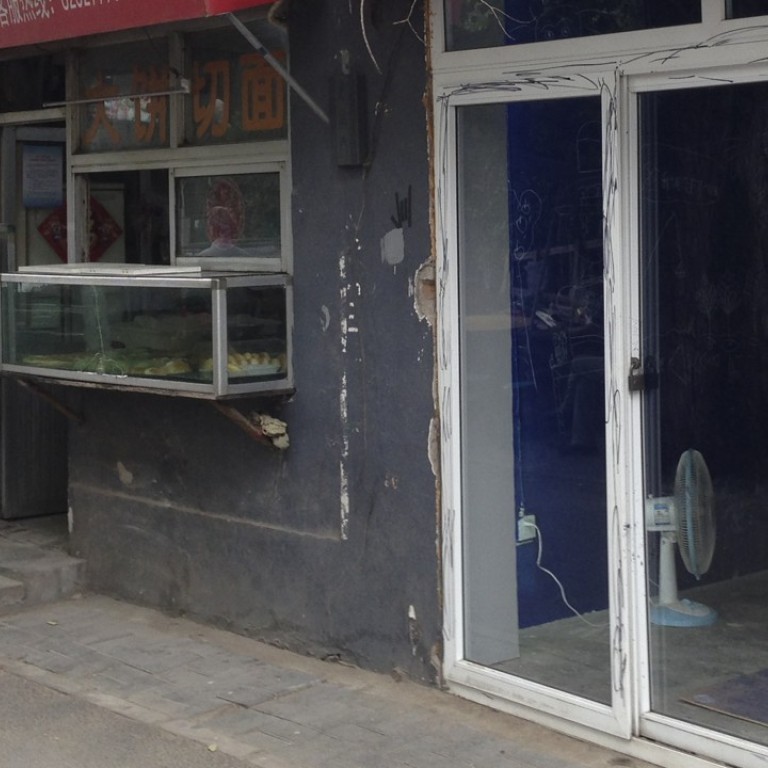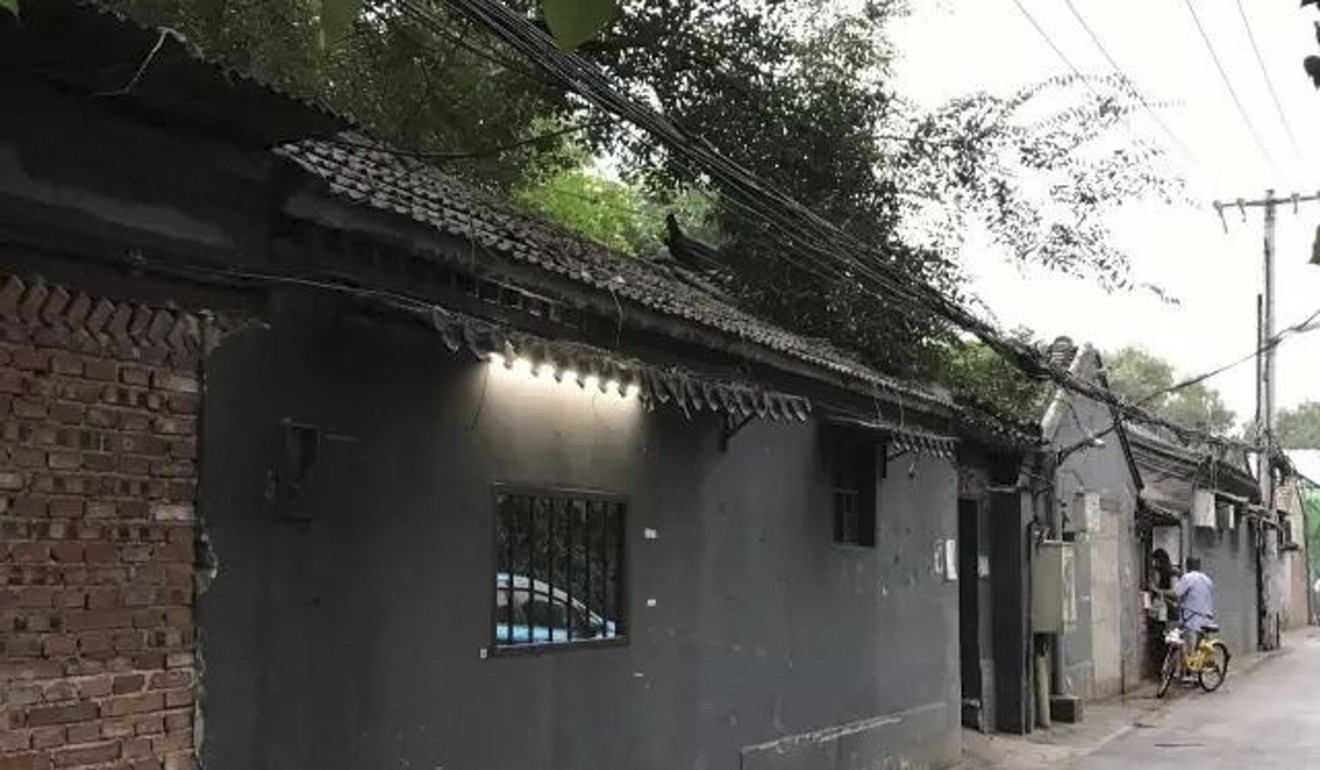
Beijing hutong clean-up threatens independent art space, forcing it to hide behind a brick wall in the hope of surviving crackdown
As two-year-old campaign of bricking up entrances to private businesses inches closer to the alley where it operates, Arrow Factory art space dons cloak of invisibility with instillation that replaces its glass front doors with a wall
A well-known independent art space has sealed itself behind a brick wall in the hope that it can survive Beijing’s crackdown on unauthorised establishments in the quiet hutong that has been its home since 2008.
The Beijing government has allowed shops, bars, restaurants and other private ventures to operate in the city’s hutongs, or alleys, since the 1980s. But two years ago authorities began notifying landlords that such businesses had engaged in the “illegal breaking up or drilling of holes” in hutong walls, and have been bricking up shopfronts and removing advertising in the name of urban beautification, heritage preservation and the discouragement of illegal structures. The campaign coincides with the government’s goal of reducing the population in central Beijing by 15 per cent, to 23 million, by 2020.

In June, such official notices began to appear on the walls near the Arrow Factory art space, a diminutive, 15 square metre exhibition venue for conceptual art in the Arrow Factory – Jianchang in Chinese – hutong. The historic alley is next to the site of China’s former imperial university and was where students practised archery. Today, it is popular with Beijingers and tourists alike for its quirky mix of grocers, arts and craft shops, independent cafes, and the tap room of craft beer maker Arrow Factory Brewing.
Bars, shops demolished in Beijing’s well-known expat haunt
As nearby businesses began seeing their front entrances blocked by the dreaded walls of red brick, Arrow Factory art space happened to be preparing its next art installation that would conceal its “shopfront”.
Called “Fences”, artist Yang Zhenzhong’s project replaced the glass front doors with a wall painted the same grey as the rest of the building, leaving only a gap for a small, barred window sealed by a two-way mirror. A surveillance camera hidden inside captures life along the alley and is as surreptitious as its host venue, wrapped as it is in a Harry Potter-style invisibility cloak.

Rania Ho, one of the three independent curators who founded the art space in 2008, says “Fences” could be seen as a reaction to Beijing’s sudden clampdown on hutong establishments, as well as a convenient disguise that hopefully will allow the venue to stay on.
They have bricked up the “illegal” glass facade in line with the official directive while retaining control over the material and the look of the place, she says. The art space is now in a holding pattern along with other establishments that have refused to move out.
“Some businesses have stayed open behind their brick walls. Their customers have to go in through the back door and they cannot advertise their presence. Nobody knows how long they can go on for,” Ho says.

The Arrow Factory art space has always been a risky venture. It set out to be an alternative to China’s highly commercialised contemporary art scene, and its non-profit nature puts a limit on its resources and scale, which may explain why it has managed to survive despite not having an official licence and not submitting its exhibitions to the censors – a common requirement under China’s tightly patrolled cultural policy.
Despite its unobtrusive presence, it has built up a solid reputation in the region’s art circles for hosting thought-provoking installations with a mix of young and established names such as Zhang Peili, Lin Yilin and Hong Kong’s own Xyza Cruz Bacani.
Its low-key presence may not be enough to save it from Beijing’s urban policy, but Ho remains hopeful. “We are waiting to see if this will just blow over. We hope we can at least make it to our 10th anniversary next year,” she says.

